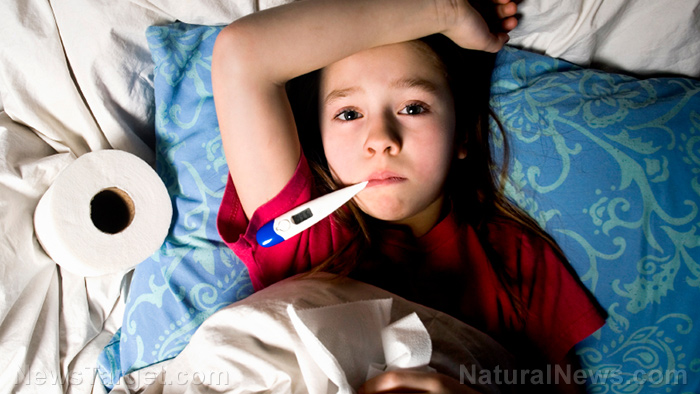
Impetigo – causes, side effects and treatments at NaturalPedia.com
Thursday, May 03, 2018 by Ralph Flores
http://www.naturalpedia.com/impetigo-causes-side-effects-and-treatments-at-naturalpedia-com.html

Impetigo is a disease that usually appears in children between two and six years. The condition, a bacterial infection caused by the Streptococcal bacteria, primarily infects the skin after the bacteria enter a break in the skin through a cut, scratch, or insect bite. In some cases, the causative pathogen in impetigo is Staphylococcus bacteria.
When a person has impetigo, he will first see red, pimple-like sores that are surrounded by red skin. It can be usually found on the face, arms, and legs. The sores will then be filled with pus and break open after a couple of days. A thick crust will then form over the popped sore.
The sores caused by impetigo are itchy, and these are contagious. Scratching them will cause them to spread, as well as coming into contact with the sores or the nasal discharge of an infected person.

Known risk factors and symptoms of impetigo
Children are prone to be infected with impetigo, especially when their skin is irritated by another condition, such as eczema, poison ivy, insect bites, and cuts or scrapes. This allows the bacteria to enter the body and cause the condition. The most common way to get it is by scratching a sore or a rash.
There are two forms of impetigo: non-bullous (crusted) and bullous (large blisters)
- Non-bullous impetigo is the most common form of the condition and is usually caused by a mild break in the skin. Both Streptococci or Staphylococci can cause the condition, and it usually leads to the formation of small blisters.
- Bullous impetigo, on the other hand, is solely caused by Staphylococci bacteria, which causes larger blisters to appear.
The first sign of impetigo is the development of a small rash on the face and the exposed regions of the extremities. This rash may either be blister-like, reddish, or have a honey-colored crust – or will have all three signs.
A characteristic of impetigo-caused rashes is that they are sharp and itchy. On occasion, these can be mildly painful.
Body systems affected by impetigo
In some cases, impetigo can develop into more severe complications.
- Soft tissue infections happen when impetigo becomes invasive. This can lead to conditions such as lymphangitis, bacteremia, and in some cases, septic arthritis, or pneumonia.
- Staphylococcal scalded skin syndrome (SSSS) is characterized by a blister that looks like a burn or a scald, hence the name. This is usually present in children under six years of age and does not scar.
- In rare cases, toxic shock syndrome can occur which affects other organs and causes an abnormal drop in blood pressure.
Food items or nutrients that may prevent or relieve impetigo
For the most part, impetigo is not a serious cause for concern. Provided you catch the infection early, here are some recommended food items to treat the condition.
- Garlic, when taken orally or topically, can help reduce the lesions caused by impetigo. It is also known to have antibacterial properties, despite its strong taste.
- Aloe vera contains both antimicrobial and anti-inflammatory properties, which help fight infection and reduce itchiness.
- Turmeric has been known as a go-to for several skin infections, thanks to the anti-inflammatory and antiseptic properties of its active ingredient curcumin.
Treatment and management options for impetigo
Healthcare professionals will usually prescribe an antibiotic cream to speed up the body’s recovery against impetigo. If anyone in your household has it, keep his sores and blisters clean and dry and wash your hands frequently.
Where to learn more
Summary
Impetigo is a bacterial infection caused by Streptococcal bacteria which primarily infects that skin after they enter a break through a cut, scratch, or insect bite.
A person with impetigo will first see red, pimple-like sores that are surrounded by red skin, which will then be filled with pus and break open after a couple of days. A thick crust will then form over the popped sore.
Healthcare professionals will usually prescribe an antibiotic cream to speed up the body’s recovery against impetigo. If anyone in your household has it, keep his sores and blisters clean and dry and wash your hands frequently.
Sources include:
Tagged Under: Tags: impetigo





